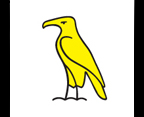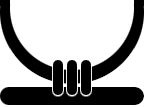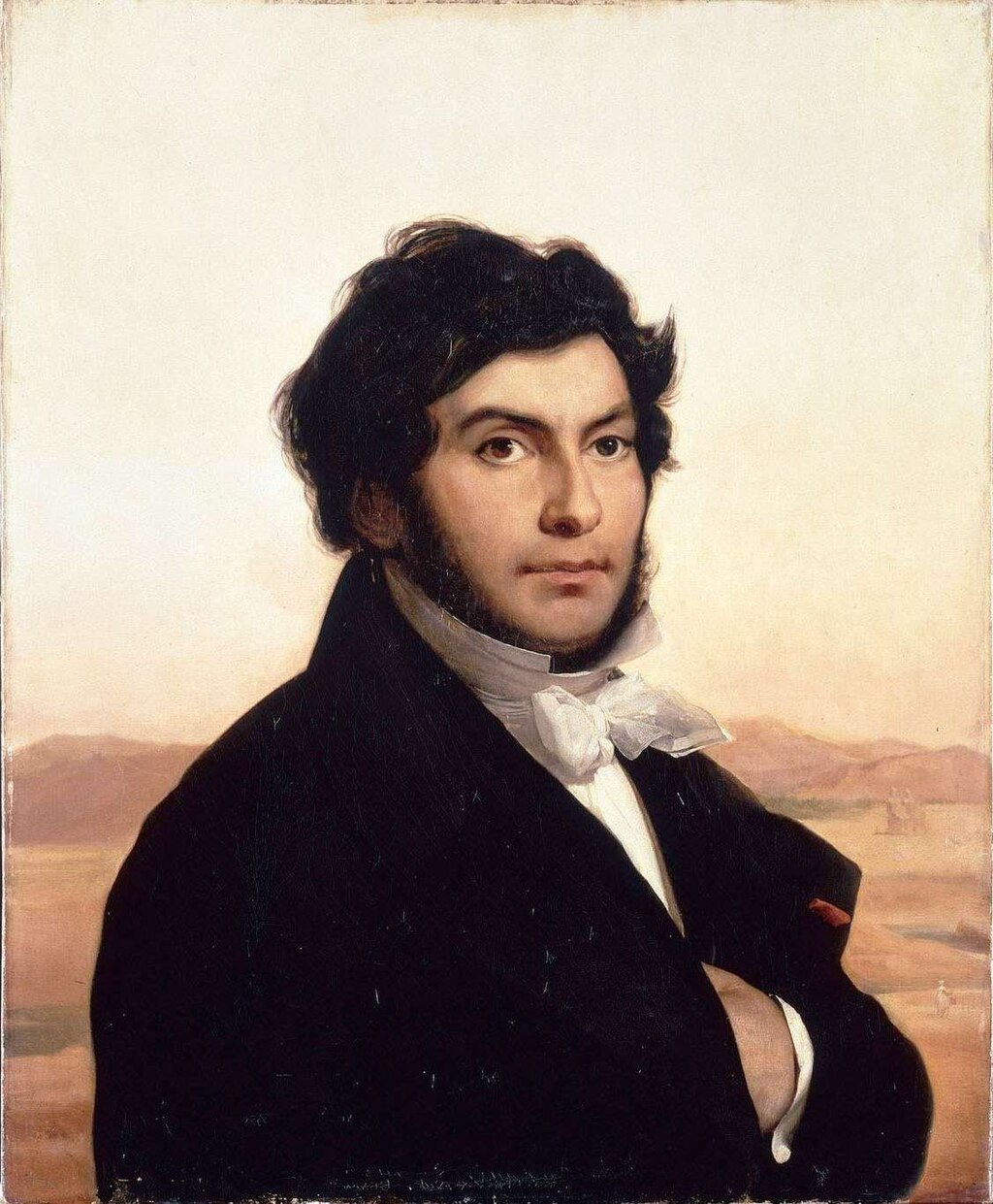Egyptian Hieroglyphic Writing
In Ancient Egypt, the writing system was based on the use of hieroglyphs, which are pictographs in the form of drawings that serve as an alphabet. The Egyptian hieroglyphic writing is one of the oldest writing systems known to man.
Etymologically, Hieroglyphic word derives from the words hieros and glyphein, which mean sacred for the first, and to engrave for the second.
Hieroglyphs are figurative, that is, they represent beings or objects from the pharaonic universe in the form of images, so that even a layman can identify at first glance, for example, a bird or a boat. The Egyptians were therefore inspired by their immediate environment for their writing system.
These signs have a double function: a phonetic function since a sign corresponds to a sound made up of one or more consonants. Twenty-four signs each have the value of a consonant, this is what is called “the hieroglyphic alphabet”. A hundred and fifty others have the value of several consonants put together. As in other later scripts of the region (Arabic or Hebrew, for example), there are no vowels.

Fragment of a wall with hieroglyphs from the tomb of Seti I (second pharaoh of the Nineteenth Dynasty of Egypt, reign c.1294 or 1290 – 1279 BC). unknown Egyptian scribe, Copyrighted free use, via Wikimedia Commons
Hieroglyphic writing systems
These hieroglyphs can be written from top to bottom, from right to left or from left to right. To know the direction of the reading, we look at the signs which represent a human being or an animal, and we read them by going in their direction.
Signs also have an ideological value: they represent an idea. With these signs, we form words that form sentences. Obviously, as the vowels are not written, we are not very sure of the pronunciation.
Cleverly Smart in Hieroglyphics
If you want to translate your name into Hieroglyphics, (the way an Egyptian scribe might write it!) try it here: Penn Museum
CleverlySmart















Cleverly Smart in Hieroglyphics
History
Around 3150 BC the famous hieroglyphics appeared in Egypt. This writing is based on pictograms and will continue almost unchanged, being confined to Egypt and its immediate periphery, before disappearing with the Byzantine domination in the 4th century of our era. For the administration and the official texts, the Egyptian scribes will use a hieratic cursive writing (simplified), for everyday life they will use a demotic writing which moves away even more from the hieroglyphs to lead to non-figurative signs always in a concern of economy of movement and more flexible layouts.
Definition:
– Hieroglyphics is the formal writing system used by the ancient Egyptians of Egypt.
– Demotic (from dimotika) refers to Ancient Egyptian scripts of northern hieratic origin used in the Nile Delta. It is also a stage of the Egyptian language that continued with the “Late Egyptian” language and was replaced by the “Coptic” language.
Read also: Most Famous Pharaohs and Greatest Pharaohs of Ancient Egypt
The fundamental contribution of the Egyptians was the discovery of the calamus (aquatic plant), ink and papyrus which will make the use of writing and its transport easier.
In China, it was not until around 1500 BC, so much later, that the invention of a writing system made up of small drawings inscribed in a virtual square took place. Each idea, each word, each concept has its own character. This is where the word ‘ideogram’ comes from, which describes the Chinese writing still in use today. Naturally, these ideograms are very numerous. The Chinese scholar distinguishes more than 8000, while the average Chinese only knows about 2000. Which is more than enough to decipher a novel, a newspaper or any other written medium.
As for Japanese writing, it is the result of a long adaptation of these same ideograms, imported from China, because the local language is very different from Chinese.
It will be necessary to wait around the year 1000 BC for the Phoenicians (Mesopotamia) to invent a real alphabet. The undisputed ancestor of all the alphabets in the world. It had only 22 letters, each representing a sound, but it had no vowels.
Later, the Arameans (Palestine) spread its use from Egypt to the Indus. From then on, the different civilizations adopted the Phoenician alphabet and adapted it. The Hebrew alphabet will retain the consonants. The Arabs are inspired by it to found their alphabet embellished with vowel signs. Latin, Ethiopian, Etruscan and many other scripts are also derived from it. Some 500 years before our era, the Greeks appropriated the 22 Phoenician signs, adapted them to their language by adding vowels. It was not until the 1st century AD that the Romans transformed the Greek alphabet to give birth to the Latin alphabet now used here. At the time, it only had 19 letters. The letters B, D, G, F, X, Y, Z, will be added later. The figures themselves will be borrowed from the Arabs.

Labels with early inscriptions from the tomb of Menes (3200–3000 BCE). Menes was pharaoh of the Early Dynastic Period of ancient Egypt credited by classical tradition with having united Upper and Lower Egypt and as the founder of the First Dynasty. Author of the photograph: W M Flinders Petrie (3 June 1853 – 28 July 1942), Public domain, via Wikimedia Commons
Who deciphered the Egyptian hieroglyphic writing?
The text was only translated in 1822 by Jean-François Champollion.
Discovered during Napoleon Bonaparte’s Egyptian expedition, the Rosetta Stone enabled Jean-François Champollion to decipher hieroglyphs for the first time, penetrating the mystery of this Egyptian writing.
The secret of the hieroglyphs was pierced by Jean-François Champollion, relying on the work of other researchers, in particular those of Thomas Young. This successful deciphering had been preceded by a long period during which hieroglyphs were falsely perceived in Europe as being pure ideograms.
September 27, 1822, Jean-Francois Champollion reveals the secret of hieroglyphics
On September 27, 1822, in Paris, Jean-François Champollion (age 32) exhibited before the Academy of Inscriptions and Belles-Lettres his discoveries relating to hieroglyphs. Two weeks earlier, after exhausting research which greatly affected his health, he had indeed managed to decipher the writing of the ancient Egyptians.

Jean-Francois Champollion. Léon Cogniet, Public domain, via Wikimedia Commons
Franco-British rivalry
Born in Figeac, in the Lot department (in south-western France), this gifted man, Jean-Francois Champollion, learned many ancient languages very early on and, driven by necessity, became a history teacher.
He soon fell in love with the civilization of the pharaohs, made fashionable by Bonaparte’s expedition to Egypt in 1798-1799.
In 1798, French soldiers discovered at Rosette, in the Nile delta, a black stone engraved with three texts, one in ancient Greek, another in demotic, a late Egyptian script, and the third in hieroglyphics.
Jean-François Champollion (1790-1832) The stone is embarked on a ship bound for France but the English intercept it and transport it to London, to the British Museum.
It will therefore arouse the curiosity of scholars, in particular the young Champollion and an Englishman fifteen years his senior, Thomas Young. Young deciphers the Demotic version and discovers that the cartouches in hieroglyphics contain the names of various pharaohs.
Jean-François goes further. He observes that the hieroglyphic text contains three times as many signs as the Greek text has words. He deduces that the hieroglyphs (there are about 5,000 of them) are not only ideograms, contrary to prevailing prejudices. They can also be used in the same text as a phonetic sign like our letters of the alphabet.
This is how he deciphered the names of Cleopatra, Ramses and Thutmose on September 14, 1822. Emotion then made him sink into a state of unconsciousness. He revealed his discovery a little later in a letter to the Académie des Inscriptions et des Belles Lettres.
Jean-François Champollion dies of overwork at the age of 42, in the midst of honors, after having finally visited Egypt, the country of his dreams.
Rosetta Stone | Without It, We Won’t Know About the Ancient Egypt
Sources: PinterPandai, World History, Wikipedia, Britannica, Canadian Museum of History
Photo credit (main picture): لا روسا (CC BY-SA 4.0) via Wikimedia Commons



